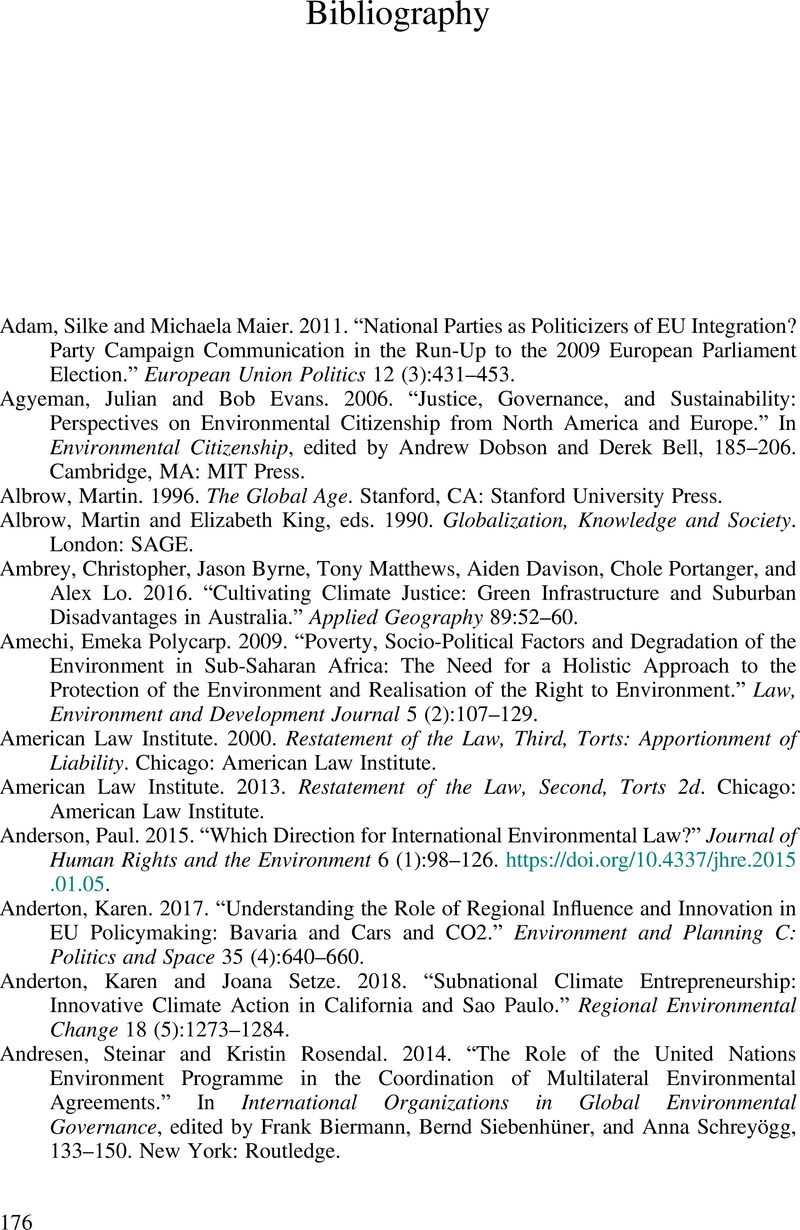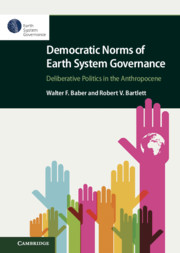Book contents
- Democratic Norms of Earth System Governance
- Democratic Norms of Earth System Governance
- Copyright page
- Contents
- Table
- Acknowledgments
- 1 Democratic Governance in the Anthropocene
- 2 Toward Consensual Earth System Governance
- 3 Empowered Democratic Agency in the Anthropocene
- 4 Embedded Governance Architecture in the Anthropocene
- 5 Experimental Adaptiveness in the Anthropocene
- 6 Equivocal Democratic Accountability in the Anthropocene
- 7 Equitable Access and Allocation in the Anthropocene
- 8 Earth System Democracy
- Afterword
- Notes
- Bibliography
- Index
- References
Bibliography
Published online by Cambridge University Press: 12 August 2021
- Democratic Norms of Earth System Governance
- Democratic Norms of Earth System Governance
- Copyright page
- Contents
- Table
- Acknowledgments
- 1 Democratic Governance in the Anthropocene
- 2 Toward Consensual Earth System Governance
- 3 Empowered Democratic Agency in the Anthropocene
- 4 Embedded Governance Architecture in the Anthropocene
- 5 Experimental Adaptiveness in the Anthropocene
- 6 Equivocal Democratic Accountability in the Anthropocene
- 7 Equitable Access and Allocation in the Anthropocene
- 8 Earth System Democracy
- Afterword
- Notes
- Bibliography
- Index
- References
Summary

- Type
- Chapter
- Information
- Democratic Norms of Earth System GovernanceDeliberative Politics in the Anthropocene, pp. 176 - 204Publisher: Cambridge University PressPrint publication year: 2021



